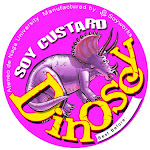About 4.3 million Filipinos are now living below poverty line. Poverty incidence in the country, which refers to the proportion of families with per capita income below the poverty threshold, was placed at 28.1 percent in 1997 and 28.4 percent in 2000 based on the new provincial poverty methodology recently approved by the NSCB Executive Board. Poverty estimates released by the NSCB also show that in 2000, 4.3 million families or 26.5 million Filipinos, more than one-third (34.0 percent) of the country’s population, were living below the poverty line. These figures indicate an increase over the 1997 levels of 4.0 million families or 24.0 million Filipinos striving to make ends meet. The annual per capita poverty threshold or the amount required to satisfy food and non-food basic needs at the national level, reached
P11,605 in 2000, 17.9 percent higher than the 1997 threshold of P9,843. Thus, a family of five members should have a monthly income of at least P4,835 to meet their food and non-food basic needs. Among the 77 provinces of the country and the four districts of
Metro Manila, Sulu consistently posted the highest poverty incidence in 1997 and 2000 with 67.1 and 63.2 percent, respectively. Also included among the poorest provinces are Masbate, Tawi-Tawi, Ifugao and Romblon.
Four provinces of ARMM are among the 10 poorest provinces in the country. What could be the possible causes of these? What are the reasons why we are poor?
There are various aspects that should be considered to analyze the answer to such questions. The Philippines may be considered poor because of the present situation and problems that it is facing nowadays.
Included in the problem are the following:
1. MISMANAGEMENT
Philippines is rich with natural resources. However, most of these resources are not well-managed. Some people engage in activities that harm the environment.
The cutting down of trees has resulted in the rapid denudation of forests. The use of dynamite and sodium cyanide in fishing has killed large amounts of fishes and other marine life. Kaingin and improper disposal of wastes has also added in the poor quality of soil and water sources.
Laguna de bay, for instance, once the largest fresh water lake in South Asia has become the dumping site of domestic and industrial wastes from surrounding areas. The Philippines, which has a total land area of
30,000,000 hectares, is only composed of 15,854,922 hectares of forest land, mostly not managed properly and still being degraded by human activities. When such things continue to happen, when we cannot make use of our available resources, Philippines will continue to be poor- even poorer in the succeeding years. The main lesson is to take care of the environment and use them for our own good.
Mismanagement not only comprises our resources but also our government. For years, there has been several changes in some policies and constitutions, which are costly. This is because our government can easily be influenced by people. It is good that our government concerns in the protection of the majority, however only a few of such laws are being implemented.
Likewise, mismanagement also concerns with the way money flows in the country. Tax collected by the government is used for infrastructures and bridges.
But some of these projects are not useful to people. Such things are called “White Elephant Projects”, or those that the government spends for least useful buildings. When such things happen, there will be higher expenditures over income and thus, the government can mo longer accommodate to spend for the other needs of the people. This leads to two possible implications: (1) they will collect higher tax, and
(2) they will borrow to the World Bank and add to the growing deficits. No matter what you chose in the options, it would still make us poor.
2. CORRUPT GOVERNMENT OFFICIALS
When someone becomes an official of the country, they are committed in helping and guiding everyone. However, they are higher probability for them to be involved in graft and corruption. Almost 80% of our government officials all over the country are all corrupt. Not to mention Major Gen. Carlos Garcia and his unexplained wealth. And even our 13th president, Joseph Estrada is involved in such case. This would probably explain why no official lives in his old house and rides in his old car after winning the election. Thus, the money that is meant to be spent for the people flows only in their hands. They continue to be rich as the poor continue to be poor. Truly being an official is synonymous with being rich.
3. LOW LABOR FORCE PARTICIPATION RATE
Job Opportunity has been hard to find nowadays. Our labor force participation rate as of July 2004 is only
67.2%. Our unemployment rate is 11.7%. Our underemployment rate is 17.6%, though only 10.6% is visible. This is alarming because when people cannot find jobs they also cannot sustain the needs of their families. And in the end, they are on their way to poverty.
4. OVERPOPULATION
As of year 2000, our population reached 76,504,077, from 7,635,426 in 1903. And it continues to grow with an annual rate of 2.36%. Filipino families now normally have more than two children and worse, those poor ones have more kids than the rich. Having a big family requires a big responsibility.
Parents must find sustainable job to raise their children and provide for their needs- food shelter and education. According to National Statistics Office, a family of five members must have a family income of at least php4, 835 per month to meet their food and non-food basic needs, an amount that is hardly attained by those families living in squatter’s area.
This is in a severe case since 4.3 million families are now living below the poverty line. Truly, overpopulation is one of the biggest problems being faced by the country these days.
5. POOR TOURISM AND LACK OF BUSINESS INVESTORS
Advertisements in magazines and televisions have been the major strategies of our Department of Tourism.
However, it doesn’t work that perfectly. In a famous magazine in England, Philippines has been excluded in the countries being promoted in south Asia. This may be the reason why we seldom have tourists in the country. Tourist6s actually adds for the good of our economy, but we have very minimal.
Lack or less business investors also is a reason why we are poor. Total approved foreign direct investments (FDIs) in the first quarter of 2002 amounted to P5.1B, or 66 percent lower than the first quarter 2001 level of P14.7B.Based on the 1994 Philippine Standard Industrial Classification (PSIC), approved FDIs in the Information and Communication Technology (ICT) sector in the first quarter of 2002 was placed at P0.5B, down by 95 percent compared to the same period in 2001.
This represents about 11 percent of the total approved FDIs in the first quarter of 2002 .Total approved investments from both Filipino and foreign nationals in the first quarter of 2002 amounted to P9.0B, or 79 percent lower than the 2001 level of P43.2B.
Business entities is where the government collects the money it spends for the people. Lesser business entities mean lesser government income. Also, lesser businesses mean lesser chance for available quality resources, which leads to poverty.
6. HIGHER PRICES IN THE GLOBAL MARKET
The increase in fuel, diesel and gasoline prices has affected everyone in the country. In the 2nd quarter of 2004, Caltex Phils., Petron Corp. and Pilipinas
Shell increased the prices of their liquefied petroleum gas (LPG) by 30 centavos per kilogram due to the continuous rise in international crude oil prices.
This has caused transportation problems for commuters all over the country. This also caused other companies to align their prices with the rapid changes. The one greatly affected with these changes is the Filipino household. When a price of a necessity gets higher, the people need to pay for them and they will have lesser money to spend for other things. They become poor. Same thing happens in an indicator of peso-dollar exchange.
7. IMPORT OVER EXPORT
The rate of export of Filipino products has been in great downfall nowadays. We became very dependent on other countries, importing products, before we can export our own. Seldom will you see handicrafts being exported to other countries. As far as I know, it is only Bagiuo and Cebu that actively exports their native products. The inability to produce goods for export may have been the reason why among the 81 provinces, Masbate has the biggest poverty gap at 22.6 percent, followed by Saranggani at 19.4 percent and Maguindanao at 19.1 percent. The poverty gap figure for Masbate implies that, on the average, the income of families living in that province should be increased by 22.6 percent of the poverty threshold or about P3,051.21 to completely eradicate poverty.
The resulting estimates based on the newly approved poverty methodology showed that among the 81 provinces in the country (including the 4 districts of NCR), Sulu consistently posted the highest poverty incidence in 1997 and 2000 with 67.1 and 63.2 percent, respectively. Also among the poorest provinces in 2000 are Masbate (62.8%), Tawi-Tawi (56.5%); Ifugao (55.6%),and Romblon (55.2%). Also included among the poorest provinces are Maguindanao (55.1%), Lanao del Sur (55.0%), Sultan Kudarat (54.3%), Camiguin (53.1%), and Camarines Norte (52.7%). All four provinces of ARMM are among the 10 poorest provinces in the country. Also included are 2 of the 6 provinces in the Bicol region. Likewise, more import adds to the problem.
8. INDUSTRIAL OVER AGRICULTURAL
Philippines is rich with land and resources for agricultural means. Many suggested for us to focus on agriculture rather than industrial because it is our strong point. However the sudden shifts from rural to urban can still be noticed. At year 2001 and 2002, the rate is 1.18% and 1.17% higher respectively. When people focus more on industrial, we are taking a really big risk- a risk that often leads to poverty.
9. LOW FAMILY INCOME AND HIGH EXPENDITURE
Some Filipinos nowadays has insufficient incomes for themselves. This is because their wages are not aligned to the changes in prices in the market.
Poverty incidence in the country or the proportion of families with per capita incomes below the poverty threshold increased from 28.1 percent in 1997 to 28.4 percent in 2000, up by 0.3 percentage points. As a proportion to the population, poverty incidence was placed at 34.0 percent in 2000, deterioration by 1.0 percentage point from 33.0 percent in 1997.
When people face probable problems, they tend to borrow money to satisfy the need. In the end, they
will have more debt and it would make them poor. Likewise, the government spends more money than it actually has that’s why we have a growing deficit.
10. NATURAL CALAMITIES AND CARELESSNESS
The Philippines is nearest to the Pacific Ocean where storms and typhoon actually originated. The possibility of it striking the country is very high, and when that happens, several properties will be destroyed. Thus, every year during rainy season, we encounter 3 or 4 typhoons and it affects our trade and the Filipino household. Some lose their houses and belongings. Earthquake, typhoons and other natural events surely make us poorer.
Filipinos can often be careless, by means of decision and other means. We have more than 20 cases annually of fires- killing and burning houses. We also have several vehicular accidents. When people die, andproperties gone, they would actually leave ther families poor.
11. TERRORIST ATTACKS
Tourists fear terrorists. Business investor fears terrorists. Everyone fears terrorists. When such thing continues, we’ll have no profits for ourselves.
12. FILIPINO VIEWS
Crab-mentality, inggit, and the view that the only way towards wealth is through moving to other countries comprise our present major problems. This are the famous beliefs associated to Filipinos. With these things in mind, we will never be out of poverty if we will not change the way we think.
These are the factors that needs to be considered if we want be out of poverty. It doesn’t end by just reading and understanding them. What we truly need is unity to face the problems we are encountering today.
What we truly need is action.
Source:
www.nscb.gov.ph
P11,605 in 2000, 17.9 percent higher than the 1997 threshold of P9,843. Thus, a family of five members should have a monthly income of at least P4,835 to meet their food and non-food basic needs. Among the 77 provinces of the country and the four districts of
Metro Manila, Sulu consistently posted the highest poverty incidence in 1997 and 2000 with 67.1 and 63.2 percent, respectively. Also included among the poorest provinces are Masbate, Tawi-Tawi, Ifugao and Romblon.
Four provinces of ARMM are among the 10 poorest provinces in the country. What could be the possible causes of these? What are the reasons why we are poor?
There are various aspects that should be considered to analyze the answer to such questions. The Philippines may be considered poor because of the present situation and problems that it is facing nowadays.
Included in the problem are the following:
1. MISMANAGEMENT
Philippines is rich with natural resources. However, most of these resources are not well-managed. Some people engage in activities that harm the environment.
The cutting down of trees has resulted in the rapid denudation of forests. The use of dynamite and sodium cyanide in fishing has killed large amounts of fishes and other marine life. Kaingin and improper disposal of wastes has also added in the poor quality of soil and water sources.
Laguna de bay, for instance, once the largest fresh water lake in South Asia has become the dumping site of domestic and industrial wastes from surrounding areas. The Philippines, which has a total land area of
30,000,000 hectares, is only composed of 15,854,922 hectares of forest land, mostly not managed properly and still being degraded by human activities. When such things continue to happen, when we cannot make use of our available resources, Philippines will continue to be poor- even poorer in the succeeding years. The main lesson is to take care of the environment and use them for our own good.
Mismanagement not only comprises our resources but also our government. For years, there has been several changes in some policies and constitutions, which are costly. This is because our government can easily be influenced by people. It is good that our government concerns in the protection of the majority, however only a few of such laws are being implemented.
Likewise, mismanagement also concerns with the way money flows in the country. Tax collected by the government is used for infrastructures and bridges.
But some of these projects are not useful to people. Such things are called “White Elephant Projects”, or those that the government spends for least useful buildings. When such things happen, there will be higher expenditures over income and thus, the government can mo longer accommodate to spend for the other needs of the people. This leads to two possible implications: (1) they will collect higher tax, and
(2) they will borrow to the World Bank and add to the growing deficits. No matter what you chose in the options, it would still make us poor.
2. CORRUPT GOVERNMENT OFFICIALS
When someone becomes an official of the country, they are committed in helping and guiding everyone. However, they are higher probability for them to be involved in graft and corruption. Almost 80% of our government officials all over the country are all corrupt. Not to mention Major Gen. Carlos Garcia and his unexplained wealth. And even our 13th president, Joseph Estrada is involved in such case. This would probably explain why no official lives in his old house and rides in his old car after winning the election. Thus, the money that is meant to be spent for the people flows only in their hands. They continue to be rich as the poor continue to be poor. Truly being an official is synonymous with being rich.
3. LOW LABOR FORCE PARTICIPATION RATE
Job Opportunity has been hard to find nowadays. Our labor force participation rate as of July 2004 is only
67.2%. Our unemployment rate is 11.7%. Our underemployment rate is 17.6%, though only 10.6% is visible. This is alarming because when people cannot find jobs they also cannot sustain the needs of their families. And in the end, they are on their way to poverty.
4. OVERPOPULATION
As of year 2000, our population reached 76,504,077, from 7,635,426 in 1903. And it continues to grow with an annual rate of 2.36%. Filipino families now normally have more than two children and worse, those poor ones have more kids than the rich. Having a big family requires a big responsibility.
Parents must find sustainable job to raise their children and provide for their needs- food shelter and education. According to National Statistics Office, a family of five members must have a family income of at least php4, 835 per month to meet their food and non-food basic needs, an amount that is hardly attained by those families living in squatter’s area.
This is in a severe case since 4.3 million families are now living below the poverty line. Truly, overpopulation is one of the biggest problems being faced by the country these days.
5. POOR TOURISM AND LACK OF BUSINESS INVESTORS
Advertisements in magazines and televisions have been the major strategies of our Department of Tourism.
However, it doesn’t work that perfectly. In a famous magazine in England, Philippines has been excluded in the countries being promoted in south Asia. This may be the reason why we seldom have tourists in the country. Tourist6s actually adds for the good of our economy, but we have very minimal.
Lack or less business investors also is a reason why we are poor. Total approved foreign direct investments (FDIs) in the first quarter of 2002 amounted to P5.1B, or 66 percent lower than the first quarter 2001 level of P14.7B.Based on the 1994 Philippine Standard Industrial Classification (PSIC), approved FDIs in the Information and Communication Technology (ICT) sector in the first quarter of 2002 was placed at P0.5B, down by 95 percent compared to the same period in 2001.
This represents about 11 percent of the total approved FDIs in the first quarter of 2002 .Total approved investments from both Filipino and foreign nationals in the first quarter of 2002 amounted to P9.0B, or 79 percent lower than the 2001 level of P43.2B.
Business entities is where the government collects the money it spends for the people. Lesser business entities mean lesser government income. Also, lesser businesses mean lesser chance for available quality resources, which leads to poverty.
6. HIGHER PRICES IN THE GLOBAL MARKET
The increase in fuel, diesel and gasoline prices has affected everyone in the country. In the 2nd quarter of 2004, Caltex Phils., Petron Corp. and Pilipinas
Shell increased the prices of their liquefied petroleum gas (LPG) by 30 centavos per kilogram due to the continuous rise in international crude oil prices.
This has caused transportation problems for commuters all over the country. This also caused other companies to align their prices with the rapid changes. The one greatly affected with these changes is the Filipino household. When a price of a necessity gets higher, the people need to pay for them and they will have lesser money to spend for other things. They become poor. Same thing happens in an indicator of peso-dollar exchange.
7. IMPORT OVER EXPORT
The rate of export of Filipino products has been in great downfall nowadays. We became very dependent on other countries, importing products, before we can export our own. Seldom will you see handicrafts being exported to other countries. As far as I know, it is only Bagiuo and Cebu that actively exports their native products. The inability to produce goods for export may have been the reason why among the 81 provinces, Masbate has the biggest poverty gap at 22.6 percent, followed by Saranggani at 19.4 percent and Maguindanao at 19.1 percent. The poverty gap figure for Masbate implies that, on the average, the income of families living in that province should be increased by 22.6 percent of the poverty threshold or about P3,051.21 to completely eradicate poverty.
The resulting estimates based on the newly approved poverty methodology showed that among the 81 provinces in the country (including the 4 districts of NCR), Sulu consistently posted the highest poverty incidence in 1997 and 2000 with 67.1 and 63.2 percent, respectively. Also among the poorest provinces in 2000 are Masbate (62.8%), Tawi-Tawi (56.5%); Ifugao (55.6%),and Romblon (55.2%). Also included among the poorest provinces are Maguindanao (55.1%), Lanao del Sur (55.0%), Sultan Kudarat (54.3%), Camiguin (53.1%), and Camarines Norte (52.7%). All four provinces of ARMM are among the 10 poorest provinces in the country. Also included are 2 of the 6 provinces in the Bicol region. Likewise, more import adds to the problem.
8. INDUSTRIAL OVER AGRICULTURAL
Philippines is rich with land and resources for agricultural means. Many suggested for us to focus on agriculture rather than industrial because it is our strong point. However the sudden shifts from rural to urban can still be noticed. At year 2001 and 2002, the rate is 1.18% and 1.17% higher respectively. When people focus more on industrial, we are taking a really big risk- a risk that often leads to poverty.
9. LOW FAMILY INCOME AND HIGH EXPENDITURE
Some Filipinos nowadays has insufficient incomes for themselves. This is because their wages are not aligned to the changes in prices in the market.
Poverty incidence in the country or the proportion of families with per capita incomes below the poverty threshold increased from 28.1 percent in 1997 to 28.4 percent in 2000, up by 0.3 percentage points. As a proportion to the population, poverty incidence was placed at 34.0 percent in 2000, deterioration by 1.0 percentage point from 33.0 percent in 1997.
When people face probable problems, they tend to borrow money to satisfy the need. In the end, they
will have more debt and it would make them poor. Likewise, the government spends more money than it actually has that’s why we have a growing deficit.
10. NATURAL CALAMITIES AND CARELESSNESS
The Philippines is nearest to the Pacific Ocean where storms and typhoon actually originated. The possibility of it striking the country is very high, and when that happens, several properties will be destroyed. Thus, every year during rainy season, we encounter 3 or 4 typhoons and it affects our trade and the Filipino household. Some lose their houses and belongings. Earthquake, typhoons and other natural events surely make us poorer.
Filipinos can often be careless, by means of decision and other means. We have more than 20 cases annually of fires- killing and burning houses. We also have several vehicular accidents. When people die, andproperties gone, they would actually leave ther families poor.
11. TERRORIST ATTACKS
Tourists fear terrorists. Business investor fears terrorists. Everyone fears terrorists. When such thing continues, we’ll have no profits for ourselves.
12. FILIPINO VIEWS
Crab-mentality, inggit, and the view that the only way towards wealth is through moving to other countries comprise our present major problems. This are the famous beliefs associated to Filipinos. With these things in mind, we will never be out of poverty if we will not change the way we think.
These are the factors that needs to be considered if we want be out of poverty. It doesn’t end by just reading and understanding them. What we truly need is unity to face the problems we are encountering today.
What we truly need is action.
Source:
www.nscb.gov.ph



.jpg)










.jpg)





